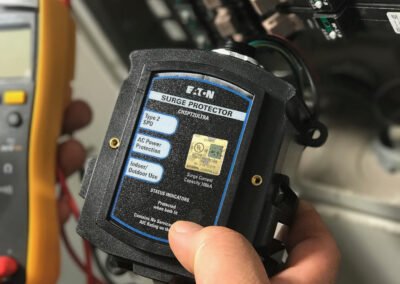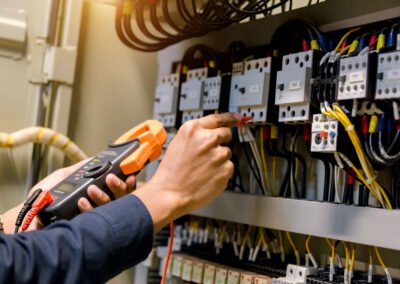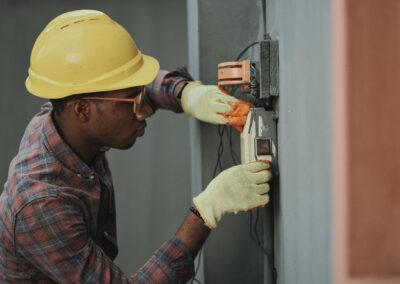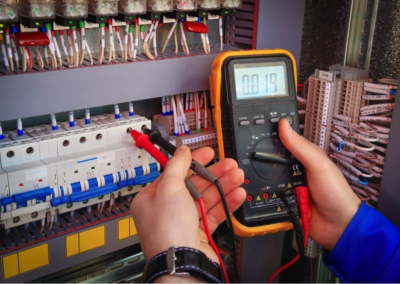Emergency Power Solutions, Scarborough
In commercial facilities, having a reliable source of emergency power is essential to ensure business continuity during power outages.
Request InformationSchedule Service
Emergency Power Solutions, Scarborough
If you’re a commercial property owner considering installing an emergency power system in your property, here are a few things you need to know and consider:
- Determine Your Energy Requirements: Before building an emergency power system, determine your facility’s power requirements. This can assist you in determining the proper system size and type needed to keep your essential equipment and systems operating during power outages.
- Choose the Appropriate Kind of Emergency Power System: There are numerous types of emergency power systems, such as backup generators, automated transfer switches, and uninterruptible power supply. Each system has advantages and disadvantages, and the optimum solution for your facility will be determined by your individual requirements.
- Acquire Permits and Certifications: In most cases, installing an emergency power system necessitates the procurement of permits from local authorities. To avoid any legal or safety concerns, it is critical that you follow all local rules and regulations.
- Contact a Qualified Professional: Establishing an emergency power system is a difficult and potentially hazardous undertaking that needs the knowledge of a competent specialist. To guarantee that the installation is done securely and correctly, contact a certified and professional contractor that specializes in emergency power systems.
- Test and Maintain the Equipment: After installing the emergency power system, it is critical to test and maintain it on a regular basis. This ensures that it is always ready to function during power interruptions and helps to extend its longevity.
- Prepare a Strategy: Lastly, having a strategy in place for how to use the emergency power system during a power loss is critical. This includes determining which equipment and systems require electricity and who will be in charge of the system during an emergency.
Placing an emergency power system in your commercial property may provide you piece of mind while also ensuring operational continuity during power outages. You can establish an emergency power system that matches your unique demands and keeps your business operating during power outages by following these suggestions and working with a knowledgeable specialist.
Don’t let power outages affect your business operations. Invest in an emergency power system from Made Electric and have peace of mind knowing that your critical equipment and systems will remain operational during power outages. Contact us today to learn more about our emergency power solutions for commercial facilities! Our electricians are skilled and knowledgeable, and we are proud to provide quick and efficient service in Scarborough and across the GTA.
Frequently Asked Questions (FAQs)
What is the cost of installing an emergency power system?
The cost of installing an emergency power system will depend on several factors, including the size of the system, the type of equipment and systems that need to be powered, and the location of the facility. Reach out to us today for an estimate of the cost to install an emergency power system for your commercial property.
How often should I test and maintain my emergency power system?
It is recommended to test your emergency power system on a regular basis to ensure that it is operational when needed. Testing should be done at least once a month to verify that the generator starts and runs properly. Additionally, you should have a professional perform annual maintenance, including fuel testing, oil changes, battery inspections, and load bank testing.
What permits are required to install an emergency power system?
All electrical projects in Canada require a permit. Here at Made Electric, our experienced electricians can obtain permits on your behalf to ensure that the installation process goes smoothly, and is completed in compliance with the Electrical Safety Authority’s (ESA) codes and regulations.




